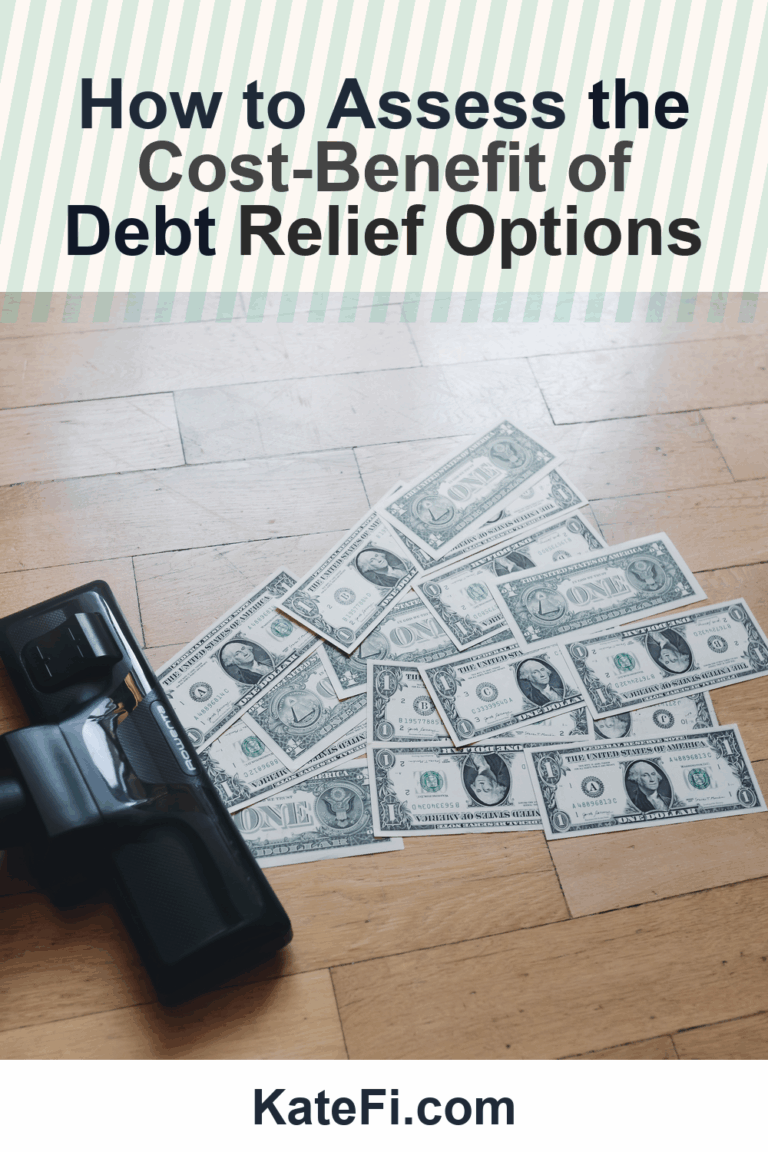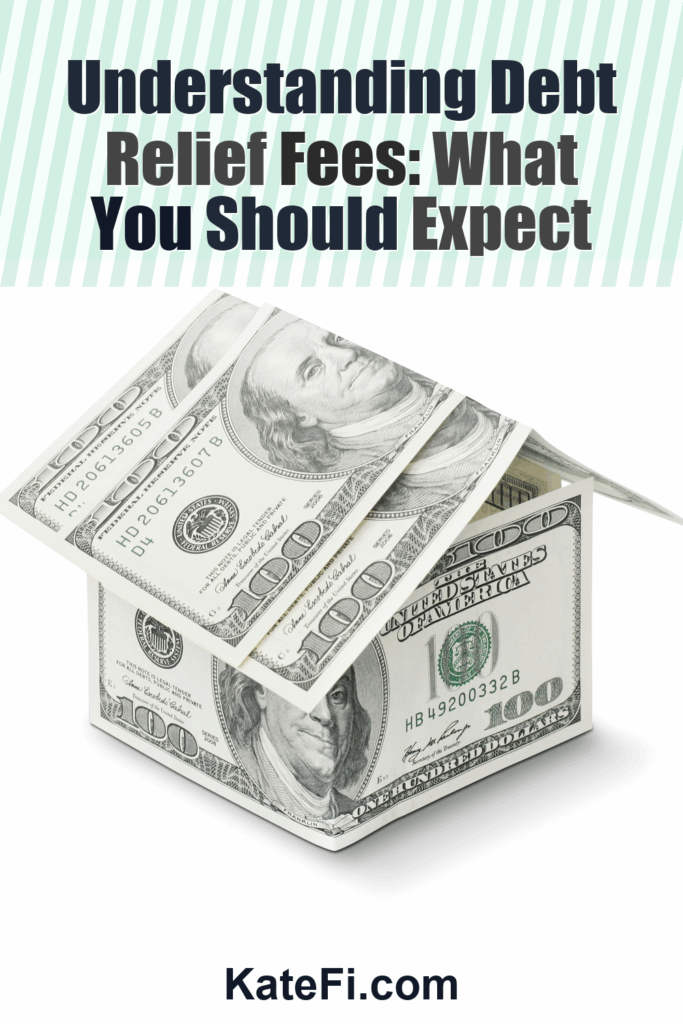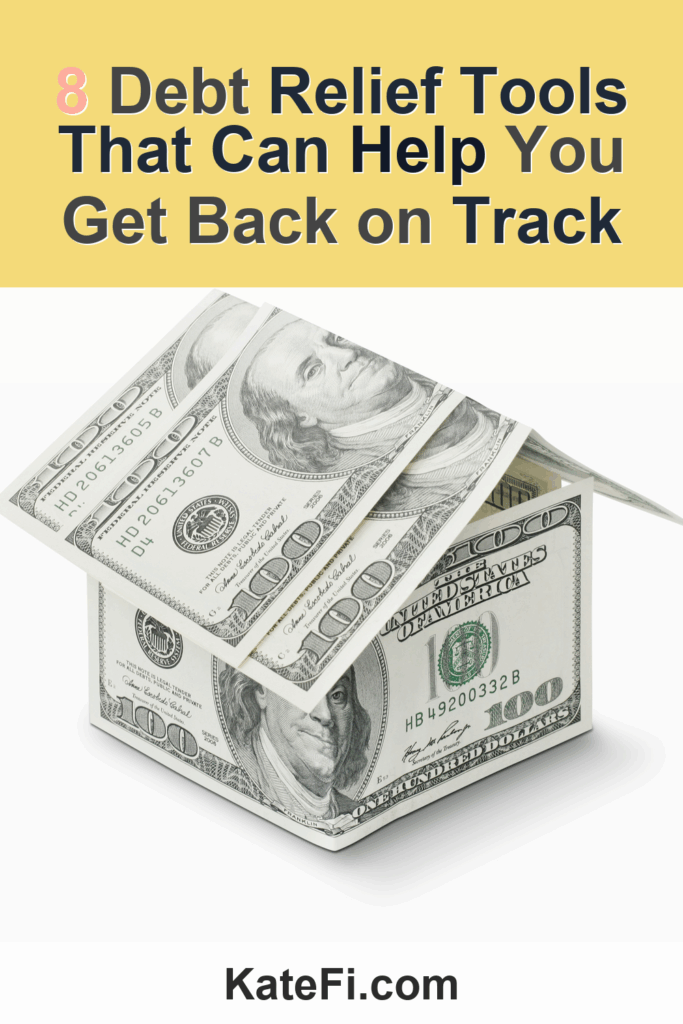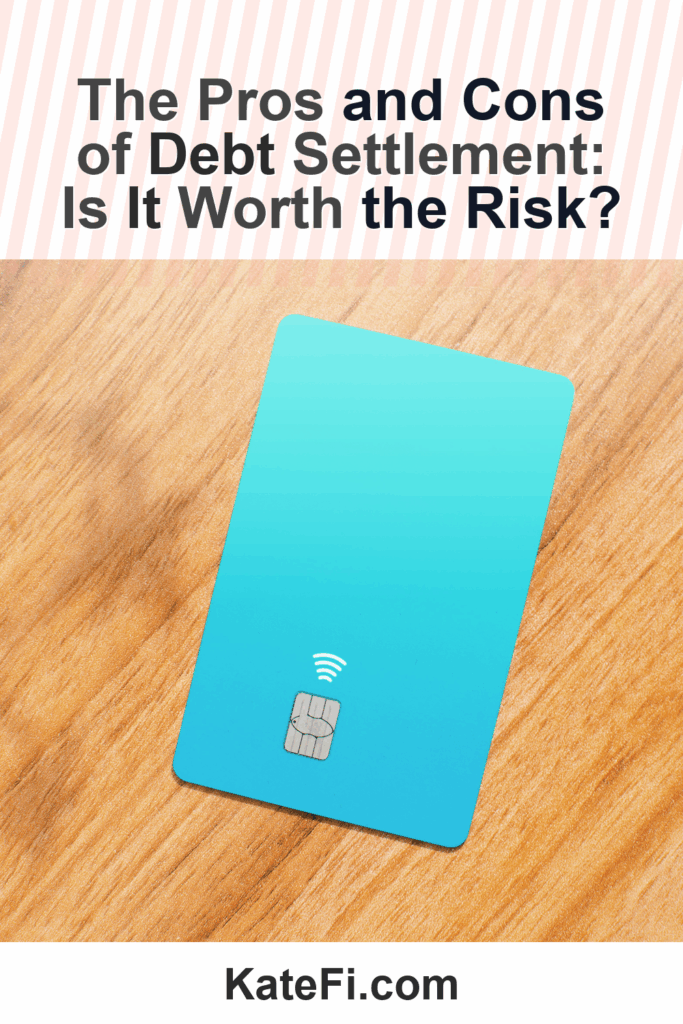How to Assess the Cost-Benefit of Debt Relief Options
Navigating the maze of debt can feel overwhelming. With multiple strategies and options available, it’s essential to assess the costs and benefits to make an informed decision. Whether you’re considering debt settlement, consolidation, or managing debts through the snowball or avalanche methods, this guide will help you weigh your options effectively.
Love our content? Show your support by following us — pretty please!🥺
FOLLOW ON PINTEREST
Hi! I’m Kate, the face behind KateFi.com—a blog all about making life easier and more affordable.
To truly understand what works best for you, we recommend getting a free consultation with a debt relief specialist. This allows you to review your specific situation and explore the best paths forward.
Understanding Your Debt Situation
👉 Start Your Free Debt Relief Review
Not available in IL, KS, OR, TN, UT, WV.
Before diving into debt relief strategies, it’s crucial to have a clear understanding of your financial standing. Take the time to compile all relevant financial documents such as bank statements, credit card bills, and any outstanding loans. This will not only provide clarity but also streamline any consultations you have with debt relief experts.
Key Documents to Gather:
- Credit Card Statements: Listing balances, interest rates, and minimum payments.
- Loan Agreements: Includes auto loans, student loans, and personal loans.
- Income Proof: Recent pay stubs or bank statements showing income sources.
- Monthly Expenses: Create a detailed budget outlining essential and discretionary spending.
By having these documents at hand, you can expedite your review process and get tailored advice suited to your needs.
Pro Tips for Debt Assessment
Lower Your Unsecured Debt
If you have $5,000+ in credit card or personal loan debt, a free consult can review options like settlement or hardship plans.
- One-on-one call to review your debts and goals
- See potential monthly payment reductions
- No obligation to enroll
Not available in IL, KS, OR, TN, UT, WV.
As you prepare to assess your options, keep the following pro tips in mind:
- Calculate Total Debt: Sum up all your debts to know exactly where you stand.
- Assess Interest Rates: Identify which debts carry the highest interest rates, as these are typically prioritized in repayment strategies.
- Set a Budget: Analyze your income versus expenses to determine how much you can realistically allocate towards debt payments.
- Identify Emergency Buffer Needs: Before making drastic changes, ensure you have some savings for unexpected expenses.
Snowball vs. Avalanche: Which Method Suits You?
Understand pros/cons of settlement vs consolidation vs DMP for your exact mix of debts.
Not available in IL, KS, OR, TN, UT, WV.
When it comes to managing debt, two popular methods stand out: the debt snowball and debt avalanche. Understanding the pros and cons of each can help you choose the most effective approach based on your personality, motivation, and timeline.
Debt Snowball Method: This approach focuses on paying off your smallest debts first. Once you clear one debt, you apply that payment to the next smallest debt.
Pros:
- Quick wins can boost motivation.
- Simple to understand and implement.
Cons:
- May end up paying more interest in the long run.
Debt Avalanche Method: This method prioritizes debts with the highest interest rates first, saving you money on interest over time.
Pros:
- Typically results in less interest paid.
- Efficient use of payments.
Cons:
- Slower wins may be less motivating initially.
Comparison Table
| Feature | Debt Snowball | Debt Avalanche |
|---|---|---|
| Payment Focus | Smallest debts first | Highest interest first |
| Emotional Motivation | Quick victories | Financially savvy |
| Long-Term Savings | Potentially more interest paid | More overall savings |
| Time to Debt Freedom | Varies based on number of debts | Varies based on interest rates |
Using this table, consider which method aligns better with your financial behavior and motivation style.
Realistic Timelines and Expectations
What You’ll Learn on the Call
- Estimated timeline and monthly payment range
- How credit may be affected in the short term
- What documents to gather to move faster
Not available in IL, KS, OR, TN, UT, WV.
It’s crucial to have realistic timelines when choosing your debt payoff strategy. Factors such as total debt amount, income, and your ability to stick to a payment plan will influence how quickly you can become debt-free.
Debt Snowball Timeline: You might find yourself making quicker progress on smaller debts. If you have several small debts of around $500 each, you might clear them within a few months. However, larger debts will take longer.
Debt Avalanche Timeline: Paying off high-interest debts may take longer initially, but you could end up seeing savings in interest payments after just a few months if you stay committed. For example, paying off a credit card with an 18% interest rate while only making minimum payments on a $1,500 balance could lead to significant savings over time.
Weighing Costs and Benefits
When it comes to debt relief, each option comes with its own set of costs and benefits. Here are some factors to consider:
- Fees: Some debt relief options may come with administrative or consultation fees.
- Credit Impact: Many debt relief strategies can impact your credit score negatively, especially if they involve settling debts for less than what is owed.
- Long-Term Plans: Consider what your financial future looks like post-debt. Will your strategy put you on a sustainable path?
To dive deeper into your unique circumstances and get personalized recommendations, we encourage you to get a free consultation to explore the best options available.
Pitfalls to Avoid
As you navigate debt relief, be aware of common pitfalls that could derail your efforts:
- Ignoring the Budget: Failing to create or follow a budget can lead you back into debt.
- Overlooking Emergency Funds: Without savings for emergencies, you might revert to credit cards for unexpected expenses.
- Skipping Professional Help: Trying to manage your debts alone without professional guidance can lead to missteps.
Practical Checklist
- [ ] Gather necessary financial documents.
- [ ] Calculate total debt and create a budget.
- [ ] Choose a debt management method (snowball or avalanche).
- [ ] Set clear, realistic timelines.
- [ ] Consult a debt relief specialist for personalized advice.
The Road Ahead: Next Steps
Once you’ve assessed your options and chosen a strategy, the next step is to act. Begin implementing your chosen debt repayment method while keeping an eye on your spending habits. Remember, discipline and consistency are key to achieving your financial goals.
Consider reaching out for additional support through professional services. Whether it’s a consultation for debt relief or just a budgeting workshop, there are numerous resources available to help you succeed.
Remember, to ensure you’re exploring the best options for your specific situation, don’t hesitate to get a free consultation.
Important: This content is for education only—not legal, tax, or financial advice. Results and eligible programs vary by situation and state. Fees apply if you enroll and complete a program. Debt relief can affect credit; missed payments may lead to collections/lawsuits. Not available in IL, KS, OR, TN, UT, WV.
By equipping yourself with knowledge and a clear plan, you’ll be better positioned to navigate the journey toward financial freedom. Remember, you’re not alone on this journey; help is just a click away.






















